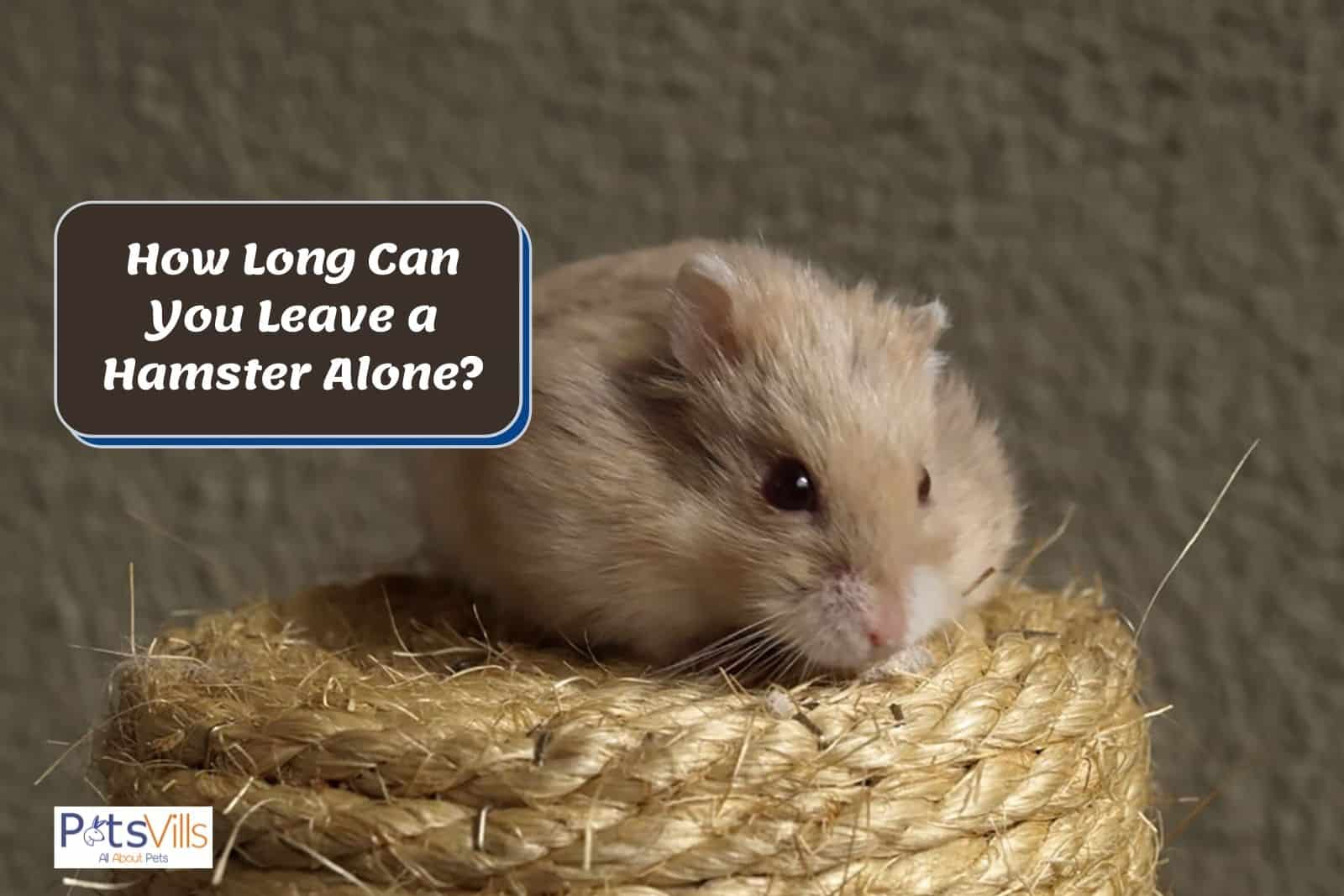You want to go away and leave your hamster alone for a few nights and you’re wondering how long it is ok to leave your hamster alone by themselves?
How long can you leave your hamster alone? You should never leave your hamster alone for longer than 48 hours. Even if you leave them with plenty of food and water something could happen that prevents them from getting the water and food they need.
FYI, this post contains affiliate links. I may earn a small commission if you purchase at no extra cost.
It’s been known for hamsters to knock over their water bottles and stop them from getting to the water they need.
Get Your Own Hamster Owner’s Handbook!
Table of Contents
How Long Can You Leave a Hamster Alone?
Hamsters are solitary creatures by nature. Pairs of hamsters don’t do well in captivity, and neither are they social with other rodents or animals.
When kept as pets, they need to be slowly conditioned to getting used to human contact. In such a situation, you obviously don’t really have to worry about your hamster getting bored when left alone.
When it comes to leaving hamsters alone, most hamster owners have health or safety concerns. A big concern is their food and water.
It is a scary thought that while you’re gone, your hamster may soon soil its food or spill its water, running out of reserves sooner than you intended.

I’ve put together a list of healthy foods that you can feed your hamster while you’re away. Some of these foods have a long shelf life and would be perfect to leave your hamster if you’re planning to go away longer than 48 hours.
However, hamsters are smarter than you think. Their natural instincts of safely hoarding food are a great survival skill. Their independent nature allows them to be able to stay alone for quite a few days.
One other major cause of concern when leaving hamsters alone is them getting untamed. These creatures already take time warming up to human environments, and leaving them alone might reverse their progress!
As far as taming is concerned, Syrian hamsters don’t pose much of a problem. Once tamed, they can remain so for a long period of time.
Dwarf hamsters, on the other hand, can become untamed when left alone for more than two or three weeks. That is why it is recommended that you play with them regularly to keep them tamed.
Since hamsters aren’t much-demanding pets in terms of food and company, some people take them for granted. What they don’t keep in mind is that hamsters may also get sick or have medical emergencies.
While it may not feel necessary for some hamster owners to refill their food and water daily, checking up on them is important for their safety. A maximum of one week is recommended when it comes to leaving your hamster alone.
Although you shouldn’t really leave your hamster alone longer than 48 hours. If you’re planning to go away any longer, it is best to get somebody to care for your hamster.
READ MORE: Do Hamsters Get Periods?
For more amazing tips, take a look at this video:
You should make sure your hamster’s cage liner is very absorbent so its cage doesn’t become dirty or smell while you’re away.
I’ve put together a list of the best hamster beddings that are soft, absorbent, and effective at odor control. This will make sure your hamster’s cage doesn’t become dirty and require cleaning while you’re away.
READ MORE: Hamster Not Drinking Water: What Should You Do?
Look for Somebody to Look After Your Hamster While You’re Away
While leaving your hamster alone for a few days may not be a problem for some pet owners, it isn’t actually the wisest choice. You know what they say – better safe than sorry!
The best thing to do when you can’t take your hamster with you on a trip is to find someone else to care for it. Perhaps ask a friend or neighbor to pet-sit as a favor?
Alternately, there are pet-sitters who charge a few dollars to take care of your pets when you are away.
Instead of paying one a considerable amount for full-time care of your hamster, you can just ask them to visit once or twice a day just to check up on your little guy.
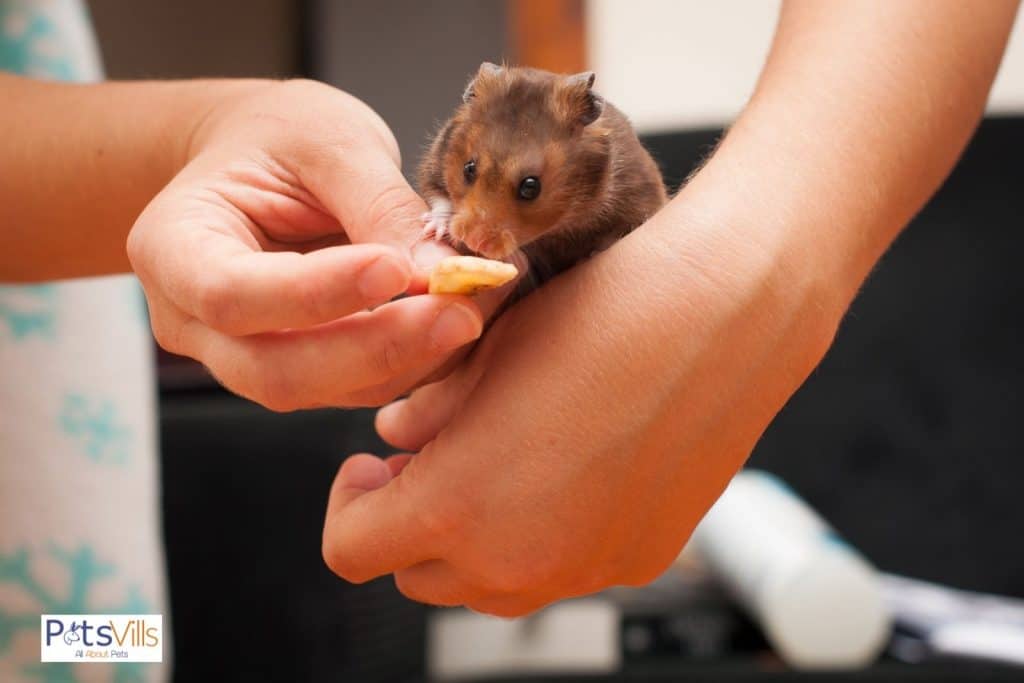
This way you won’t have to keep worrying about your hamster’s wellness when you’re away. Hamsters may be solitary creatures, but when you’ve taken the responsibility of one, you can’t just expect it to fend for itself!
Make Sure It Doesn’t Get Too Cold While You Are Away!
Imagine finally returning home to your pet hamster. You excitedly look into its cage, and find – what? A cold, still hamster that doesn’t even stir at your voice.
Are we outlining your horrors for you? It doesn’t have to be that awful, though. This is a seemingly death-like state that hamsters adopt when temperatures run too cold, better known as hibernation.
The worst-case scenario of pet hamsters dying does happen when they are neglected, actually. Since pet hamsters haven’t lived in the wild, they might not be able to hibernate properly, leading to death.
Basically, you need to make sure it won’t get cold when you leave your hamster alone. This is to avoid a situation where your hamster would even need to hibernate.
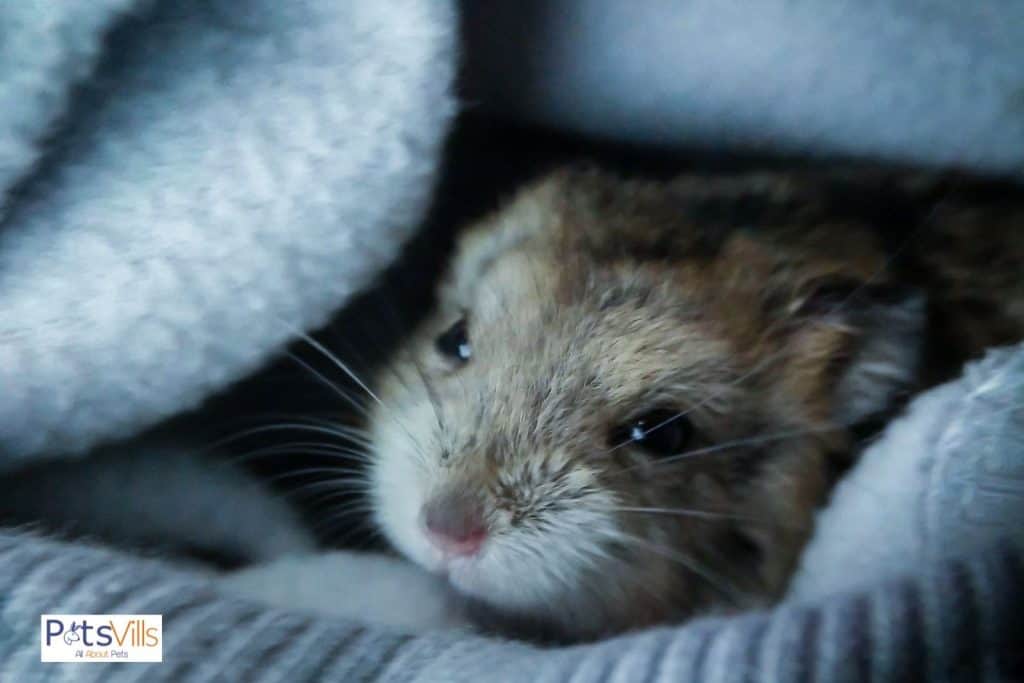
Hibernation is more common in Syrian hamsters, while Dwarf hamsters may get sick. Just a few hours of exposure to cold temperatures can have serious consequences for your little furball.
As temperatures get colder, a hamster starts to shiver and refuses to eat or drink. Breathing becomes labored, and soon enough, hibernation may kick in.
The ideal temperature at which to leave a hamster is 65 to 75 degrees Fahrenheit. While the area in which your hamster is kept should be well-ventilated, it shouldn’t be drafty.
Any responsible hamster owner would monitor the temperature of their hamster’s room if they suspect it is getting colder than it should. If the temperature is found to fall below 65 degrees, add a heating pad to your hamster’s cage or warm up the room with a space heater.
Leave your hamster in a warm part of the house so that it stays awake and comfortable. Moreover, if you live in a cold area, you should leave the central heating system on. It can be tricky to wake them up once they go into hibernation!
The best way to wake up a hibernating hamster is by gently warming it up. Try stroking it with your hands, hold it close to your body, turn on the heat, and wait for it to come around. Provide it plenty of food and water when it wakes up.
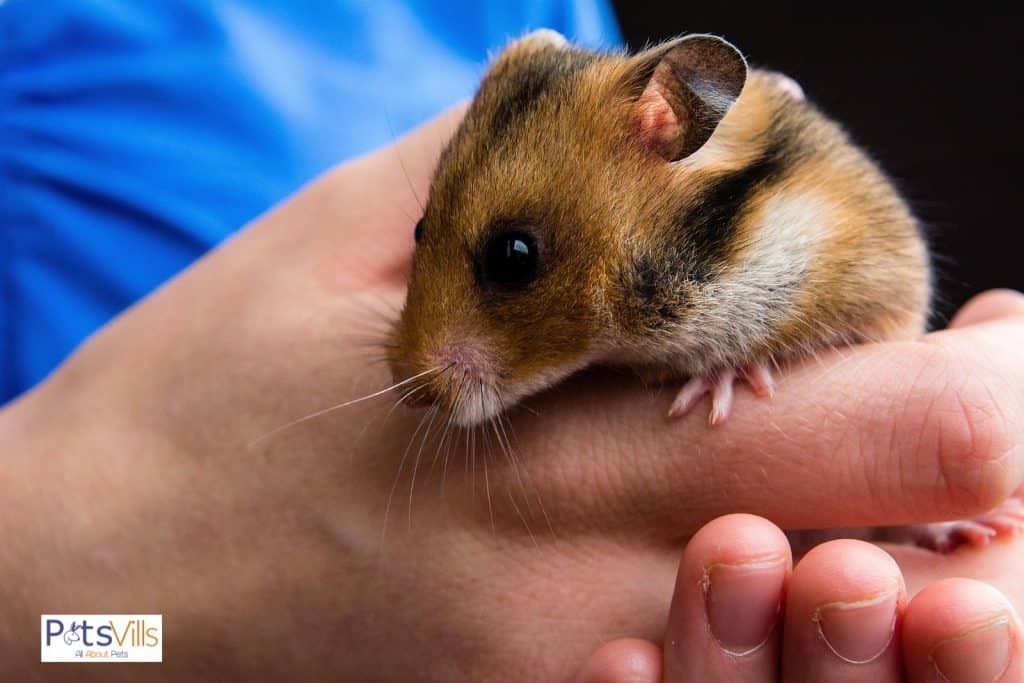
Some people misjudged hibernating hamsters for dead ones! Since a hamster’s heartbeat gets really slow when it hibernates, it can’t be relied upon to check whether your hamster is alive or not.
The main difference between a hibernating hamster and a dead one is stiffness. Hibernating ones will be still, but their bodies won’t be stiff when held.
Since there have been incidents where hibernating hamsters have been buried due to being mistaken for dead, you should exercise extra caution. The best way to prevent such horrific mishaps is to provide your hamster a warm environment at all times.
In addition to a suitable temperature, the brightness of a room also makes a difference. It is recommended to leave your hamster somewhere it doesn’t get too bright. Since they are crepuscular animals that are active during twilight hours, dim light is good for keeping them active.
Be aware of the signs a hamster is dying!
Check out the things that hamsters hate in this video!
Don’t Leave Your Hamster Alone Too Long
This point can’t be emphasized enough. Hamsters are living beings, and not just some toys to leave behind and resume playing with once you’re back!
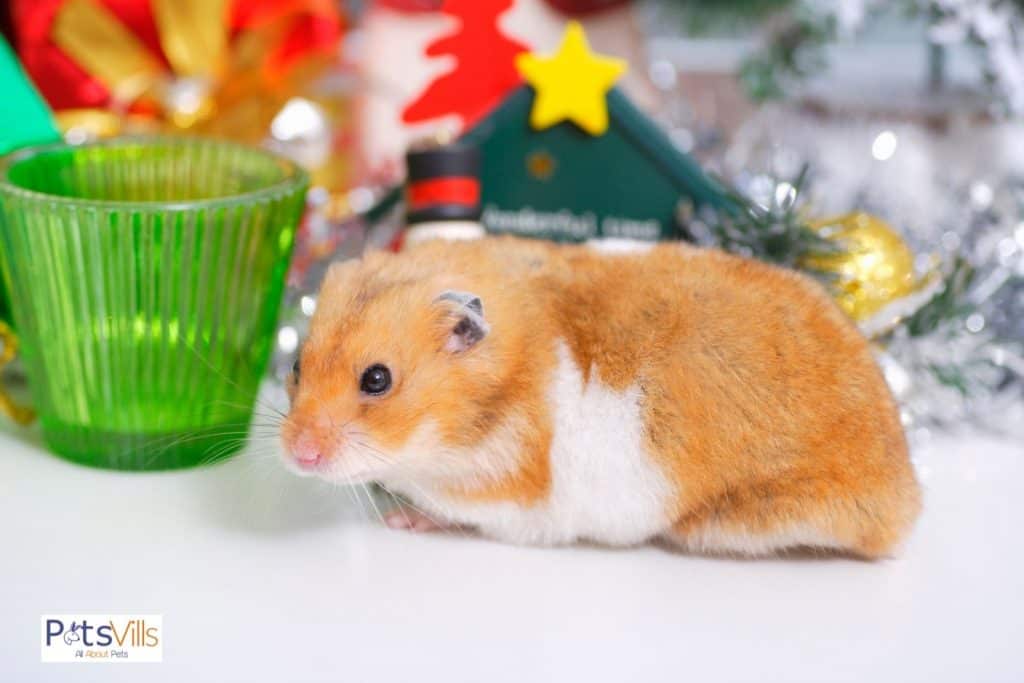
These small creatures may be independent in the wild but as your captives, they are pretty much helpless.
They need you to provide them food, water, and suitable temperatures. If you think you can just leave your hamster alone for weeks with a bottle of water and a stockpile of food, think again!
As for water, hamsters are used to knocking things over, which may include their water bottles. The water bottle may break, leaving your hamster parched and dehydrated.
That is why sensible pet owners often leave two water bottles with their unsupervised hamsters. In case one breaks, your hamster will not have to stay thirsty.
A hamster’s cage does need at least weekly cleaning for proper maintenance of hygiene. This is another reason why you shouldn’t leave one alone for a long time period.
CHECK: Hamster Lifespan
Give Them Extra Food While You’re Away
Obviously, when you are leaving your hamster alone, you’ll have to provide food and water. As for the quantity, we already discussed how an extra water bottle is necessary since your hamster may break or spill the first one.
Similarly, it is equally important to leave behind some hamster-friendly food. While hamsters generally eat in very small quantities, it is recommended that you leave extra food when you’re going away.
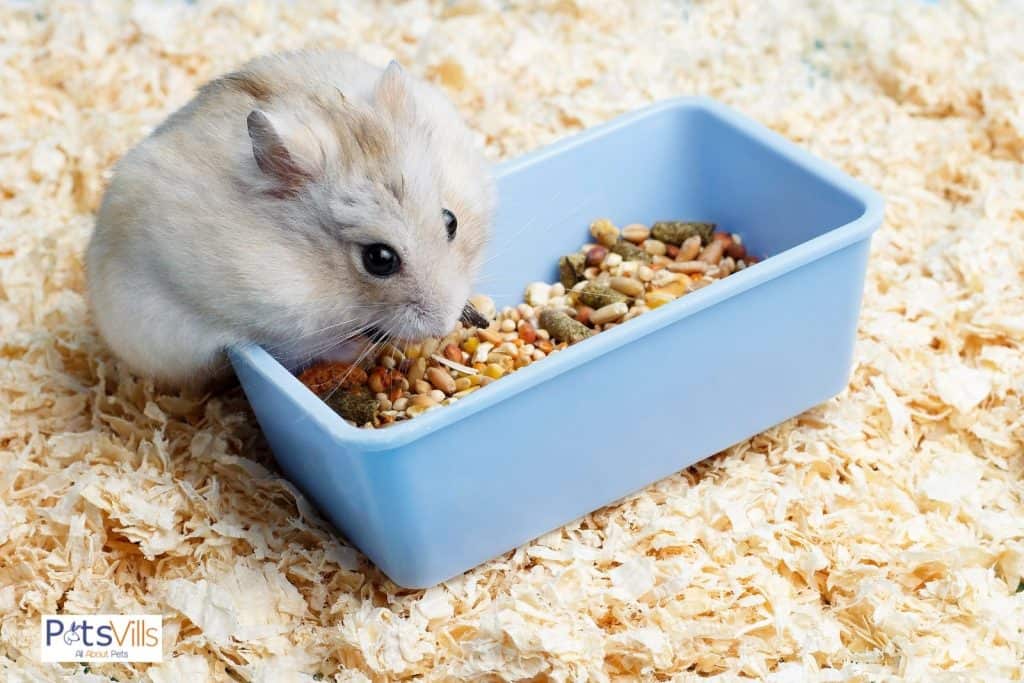
Just like water, food can also be spilled or soiled. There may even be occasions when you have to prolong your trip! An extra stock of food is a good way to ensure your hamster stays well-fed, whatever the circumstances.
You must also make sure that the foods you leave won’t make your hamster sick while you are gone. It is not recommended to introduce anything new to your hamster’s diet when you’re leaving it alone.
Dry foods that aren’t too sugary and won’t spoil are the best kind to leave with your hamster.
In two or three days, if you live in a moist environment, some kinds of hamster food like fruits, vegetables, and bread can rot or get moldy. That is why is recommended to leave behind dry foods like seeds or dried mealworms instead.
In addition to food, it is better to provide something for your hamster’s entertainment. Leave behind a toy or two so that it has some activity other than eating and sleeping.
Plenty of fresh bedding is also essential so that your hamster stays comfortable and sleeps snugly. A hamster’s bedding can usually stay in usable condition for up to a week, so once you provide some fresh material, it can last a few days.
Remember, Getting a Pet Sitter is Always the Best Option
When you’re leaving your hamster alone for a few days, there’s only so much you can do. You may have cleaned its cage, given it extra food and extra water, and even provided fresh bedding, but how long can you expect your hamster to go on without supervision?
Instead of guessing the answer or listening to various takes of different hamster owners, it is best to avoid leaving your hamster unsupervised after all. There are actual businesses dedicated to taking care of pets whose owners are away.
A good pet-sitter will responsibly care for your hamster so that it gets the right food, water, and playtime every day. He/she can ensure your little pet is kept warm and safe, away from any dangers or mishaps that could’ve happened otherwise.
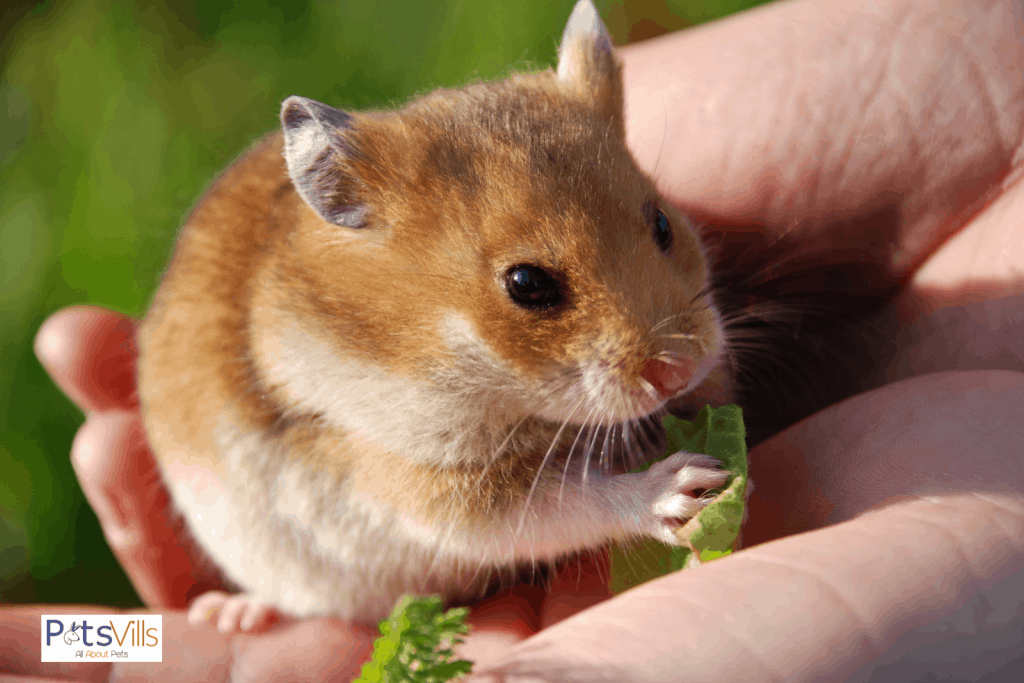
If getting a pet-sitter is turning out to be too expensive for you, you can ask a trusted person to check up on your hamster every once in a while. It won’t be as costly, and it will be in the best interests of your hamster.
Health and Safety Precautions for Hamsters
When leaving your hamster alone, there are certain tips that can ensure its health and safety:
- Avoid keeping them in areas exposed to temperature extremes. Too cold temperatures can result in hibernation, and too hot may lead to heatstroke.
- Keep your hamster safely away from larger animals. Cats and dogs can injure or kill your pet!
- Avoid placing your hamster’s cage at a height. In case of escape, it could injure itself from a fall.
- Before you leave, place your hamster somewhere safe and clean its cage with soap and water. Replace the bedding and food with fresh stock.
- NEVER leave two unrelated hamsters in the same enclosure. It can cause deadly fights!
- Especially avoid housing a Syrian hamster with another pet. It’s a recipe for disaster.
- Avoid leaving foods with added sugars. Prefer foods that have at least 15% protein.
- Have a good-quality hamster wheel in its cage so that it can get its necessary exercise.
- Avoid old-fashioned exercise wheels that contain rings around them since hamsters can get badly injured on those. Opt for a solid exercise wheel that won’t trap your hamster by accident.
- It is best to ask a vet to suggest the perfect size of the exercise wheel you should buy for your hamster.
- Avoid leaving pine or cedar bedding since it is harmful.
- Avoid leaving food and water in glass or other breakable vessels. If they break, your hamster can seriously injure itself over the shards!
- Avoid keeping straw in your hamster’s cage. It can cause injury.
Once you exercise all these precautions, it is unlikely that your hamster will meet an accident when you are away. However, you never know when it may fall sick and need a visit to a vet. This is why many people advise against leaving a hamster alone for more than 3 to 4 days.
You should always have someone check in on your pet when you are leaving for more than a few days. At the end of the day, knowing your hamster is safe and sound at home will give you peace of mind.
Check out this video about the things that hamsters hate.
FAQs
Do hamsters like to be left alone?
Most hamsters prefer to live alone. Dwarf hamsters can live in pairs if they are of the same sex.
How long can a hamster survive on its own?

A hamster can live for at least 4 days on its own but it is not recommended to leave them on its own.
How long should you leave a hamster to settle in?
Give your hamster 24 hours to settle in before introducing yourself to them. When a hamster is in a new location they need to get used to the new noises and environment.


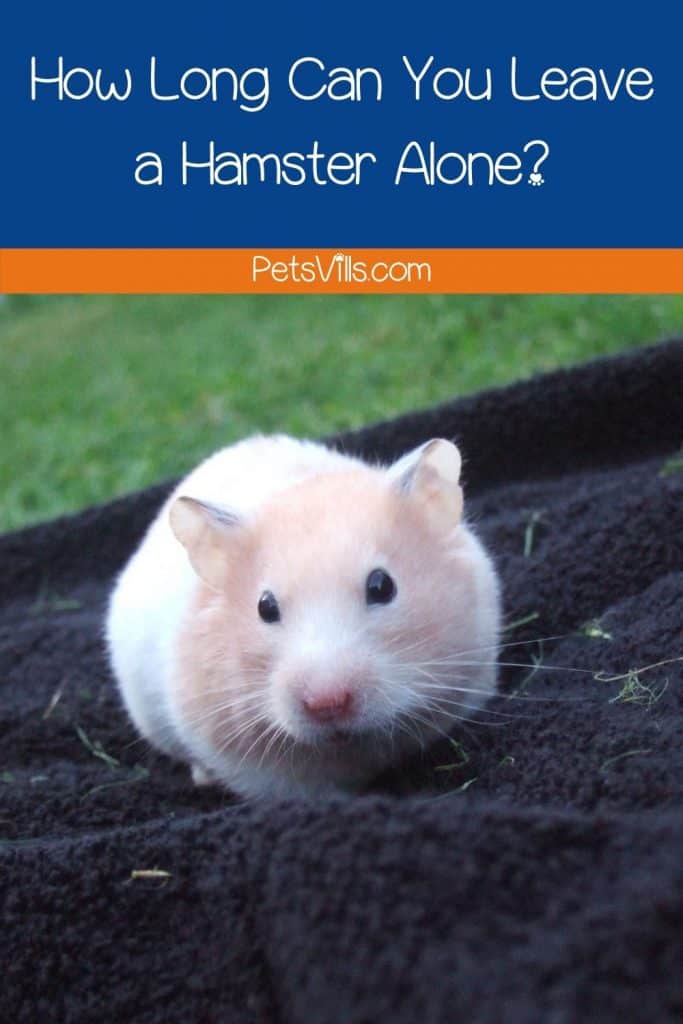
Have you tried leaving your hamster alone? How’s the experience? Please share with us below!
Alina Hartley is a small-town girl with a ginormous love of bearded dragons. It all started with Winchester, a baby bearded who was abandoned at the shelter by his former owners because of a birth defect that caused one front leg to be shorter than the other. Alina originally went to the shelter looking for a guinea pig, but one look at Winchester and it was love at first sight. From that day on, Alina has dedicated her life to learning everything she can about bearded dragons. She loves helping new beardie parents start their incredible journey with these magnificent reptiles.
Follow her on:
LINKEDIN
TWITTER.
Read her latest articles HERE
Learn more about her HERE.

